Electric circuits miscellaneous
- In the following figure, C1 and C2 are ideal capacitors. C1 has been charged to 12V before the ideal switch S is closed at t = 0. The curent i(t) for all t is
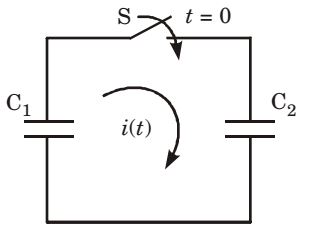
-
View Hint View Answer Discuss in Forum
Time constant = RC
In the given circuit, R = 0
∴ Rise time = 0;
hence capacitor charges instantaneously and current can be represented as impulse function.Correct Option: D
Time constant = RC
In the given circuit, R = 0
∴ Rise time = 0;
hence capacitor charges instantaneously and current can be represented as impulse function.
- The circuit shown in the figure given below is energized by a sinusoidal voltage source V1 at a frequency which causes resonance with a current of I.
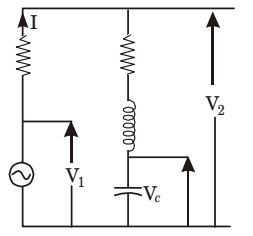
The phasor diagram which is applicable to this circuit is
-
View Hint View Answer Discuss in Forum
At resonance, voltage across L and C will be equal in magnitude and opposite in direction. So V2 is the voltage which is equal to the voltage across R1, and will be in the same direction of I and V1 be voltage across capacitor Vc will be lagging the current by 90°.
Thus, we have
Correct Option: A
At resonance, voltage across L and C will be equal in magnitude and opposite in direction. So V2 is the voltage which is equal to the voltage across R1, and will be in the same direction of I and V1 be voltage across capacitor Vc will be lagging the current by 90°.
Thus, we have
- The circuit shown is a
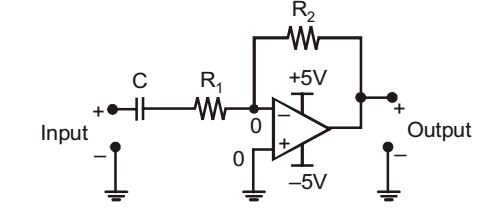
-
View Hint View Answer Discuss in Forum
Vo = - R2 Vin R1 + 1 sC1 = - sC1R2 sC1R1 + 1
It is HPF transfer function .Correct Option: B
Vo = - R2 Vin R1 + 1 sC1 = - sC1R2 sC1R1 + 1
It is HPF transfer function .
- The rms value of the current i(t) in the circuit shown below is
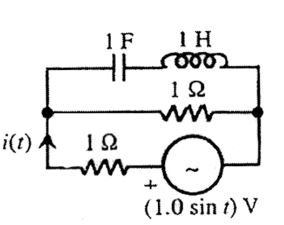
-
View Hint View Answer Discuss in Forum
ω = 1 rad / sec
XL = 1 Ω ; XC = 1 Ω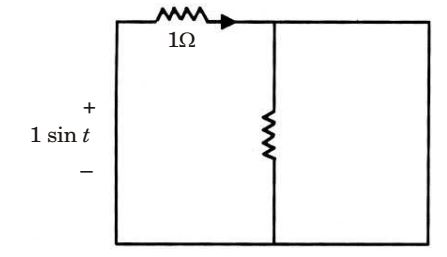
I(t) = sin t = sin t 1 Ω Irms = 1 A √2 Correct Option: B
ω = 1 rad / sec
XL = 1 Ω ; XC = 1 Ω
I(t) = sin t = sin t 1 Ω Irms = 1 A √2
- Divergence of the three-dimensional radial vector field →r is
-
View Hint View Answer Discuss in Forum
Let three dimensional field, →r = xî + yĵ + zk̂
∴ ∇ .→r = 
d î + d ĵ + d k̂ 
.(xî + yĵ + zk̂) dx dy dz ⇒ ∇ = d . x + d . y + d . z dx dy dz
= 1 + 1 + 1 = 3
Correct Option: A
Let three dimensional field, →r = xî + yĵ + zk̂
∴ ∇ .→r = 
d î + d ĵ + d k̂ 
.(xî + yĵ + zk̂) dx dy dz ⇒ ∇ = d . x + d . y + d . z dx dy dz
= 1 + 1 + 1 = 3

